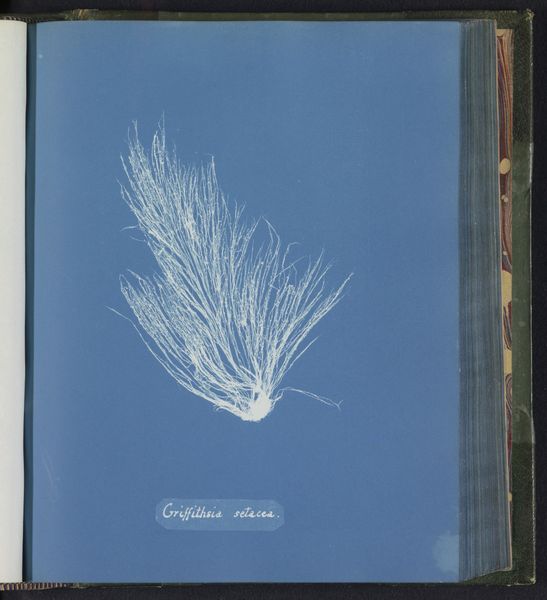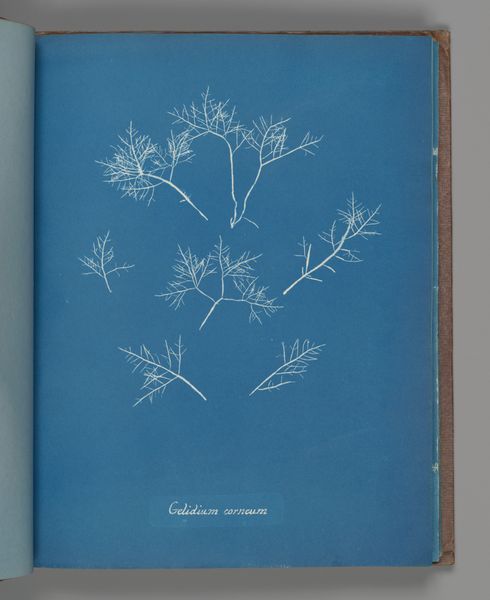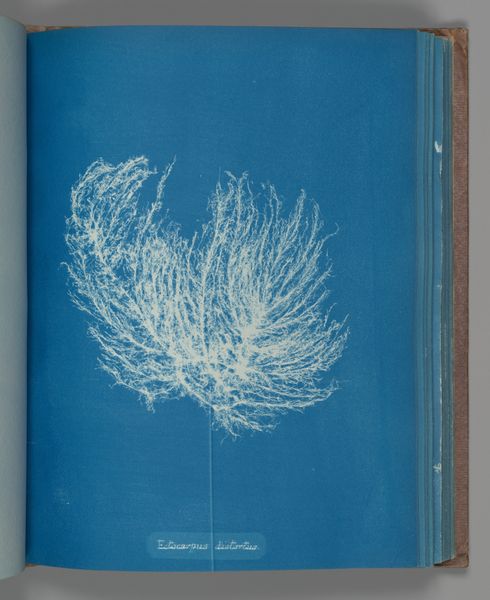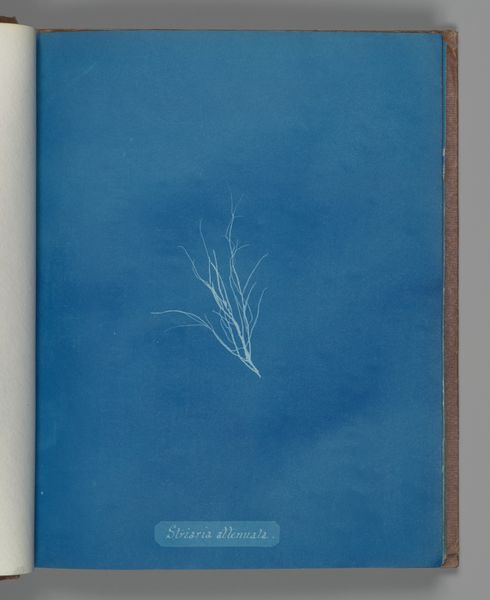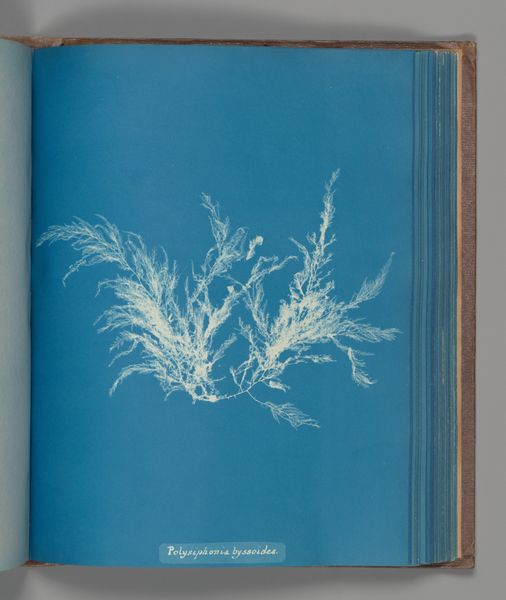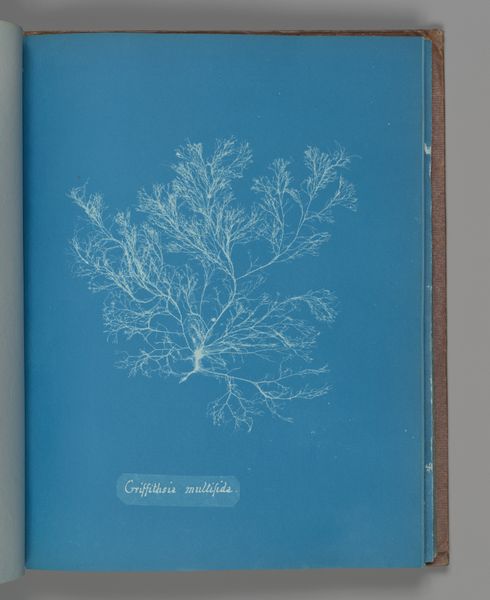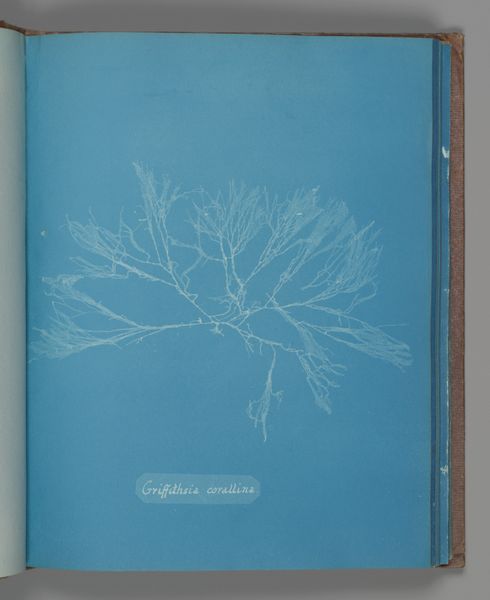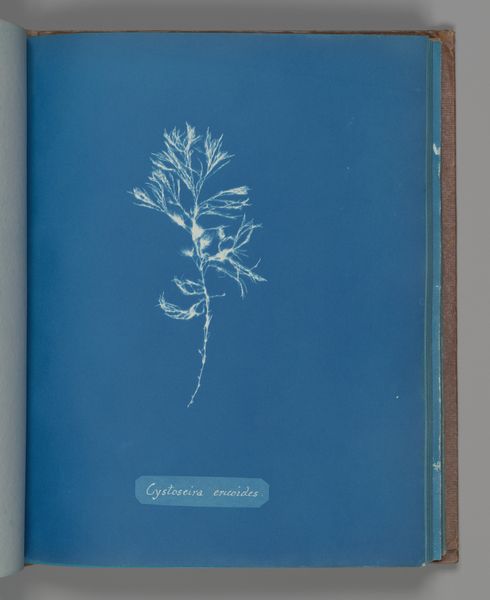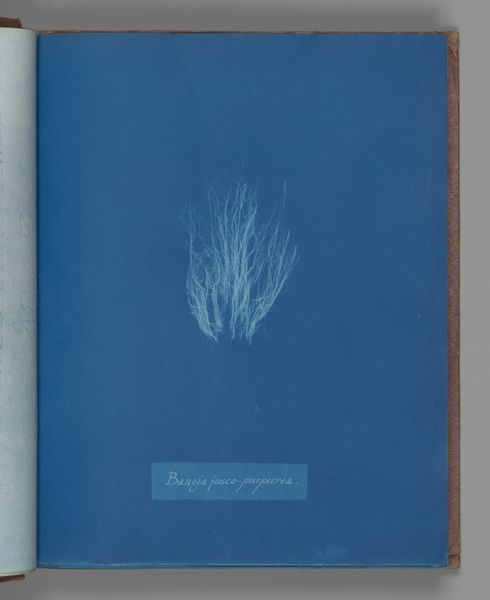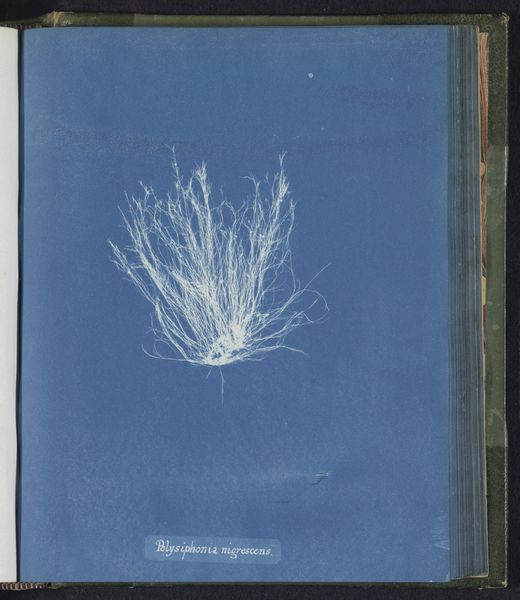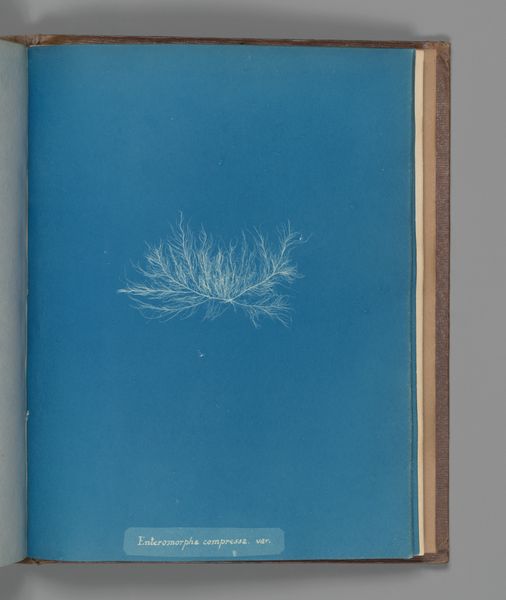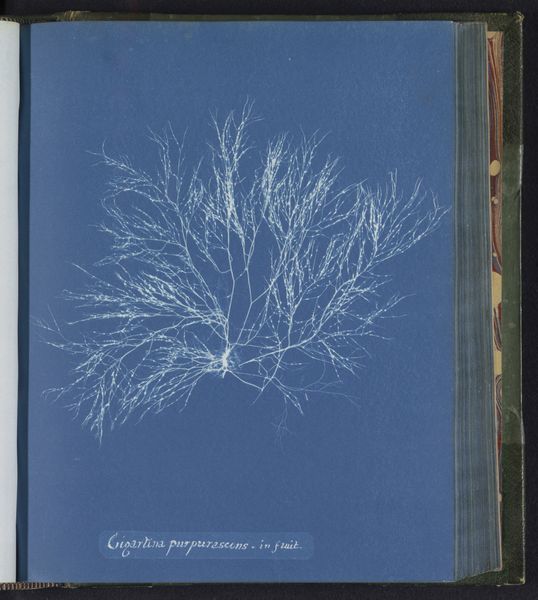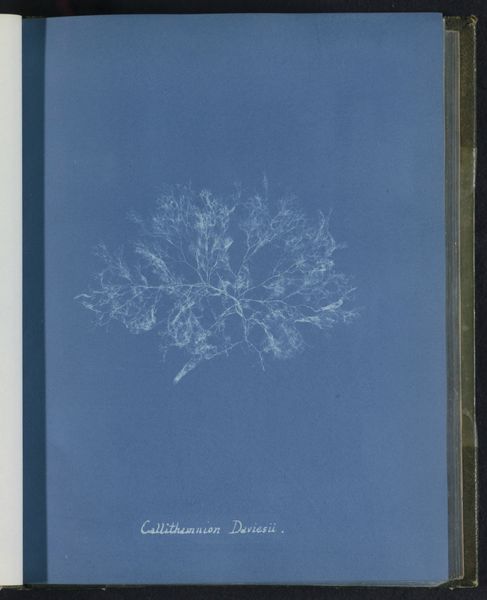
print, cyanotype, photography
#
still-life-photography
# print
#
cyanotype
#
photography
#
realism
Dimensions: Image: 25.3 x 20 cm (9 15/16 x 7 7/8 in.)
Copyright: Public Domain
Editor: Right, so this is Anna Atkins’ "Griffithsia setacea," made sometime between 1851 and 1855. It’s a cyanotype, so a very early kind of photographic print. The stark white against the intense Prussian blue really catches my eye. What do you make of it? Art Historian: You know, looking at this, I feel transported, almost like floating in the deep sea itself. The starkness, as you pointed out, evokes a sense of quiet solitude. Atkins, in her scientific precision, ironically unveils a poetic vision. Isn't it interesting how she merges science and art? It reminds me of holding a fragile specimen in my hands, its delicate beauty a testament to the wonders of the natural world. Do you think that duality contributes to its lasting impact? Editor: Absolutely, that tension is definitely present. It’s a really intriguing blend. It's like a ghostly image, both ethereal and incredibly detailed at the same time. Art Historian: Precisely! And imagine Atkins herself, a woman in the mid-19th century, pioneering this photographic technique. She was creating something entirely new. It's not just a scientific record; it’s a bold artistic statement disguised, perhaps, as objective observation. One wonders what moved her so profoundly about the plant form. Editor: I never really thought about her place in that time period; it does add an extra layer to it. I guess what strikes me now is how forward-thinking she was. Art Historian: Indeed! Her work paved the way for countless artists and scientists. And in her delicate portrayal of sea algae, we discover an eternal dance between art, science, and the enduring beauty of our blue planet. Editor: It’s really impressive when you look at it that way, seeing how many fields this piece intersects with and the conversations it can spark. Art Historian: Exactly! Sometimes, it's not just about seeing, but truly perceiving. And art, well, it just helps us tune our eyes to the symphony of the world.
Comments
No comments
Be the first to comment and join the conversation on the ultimate creative platform.
